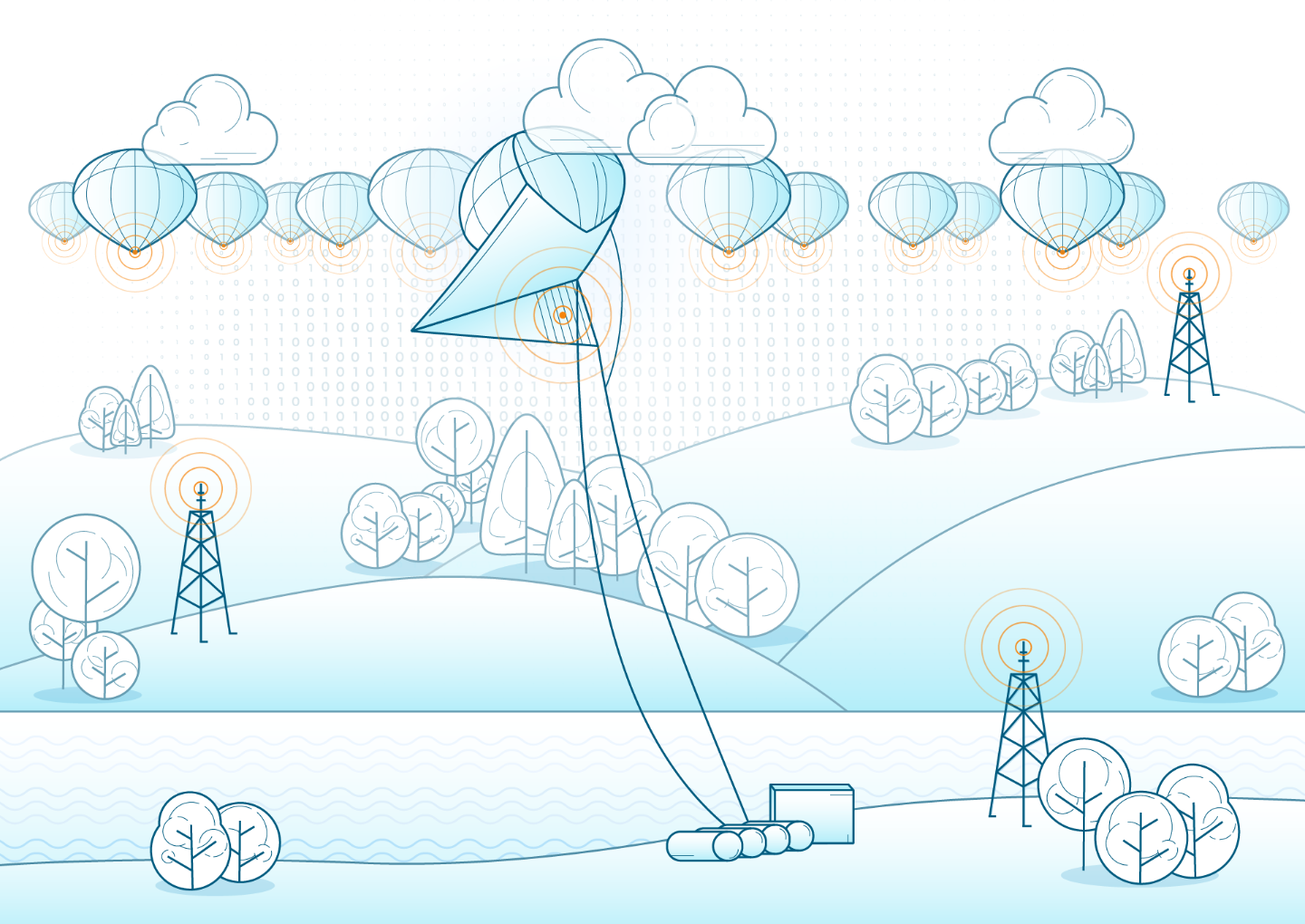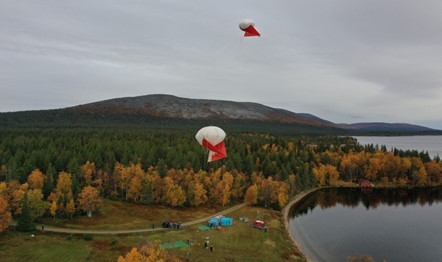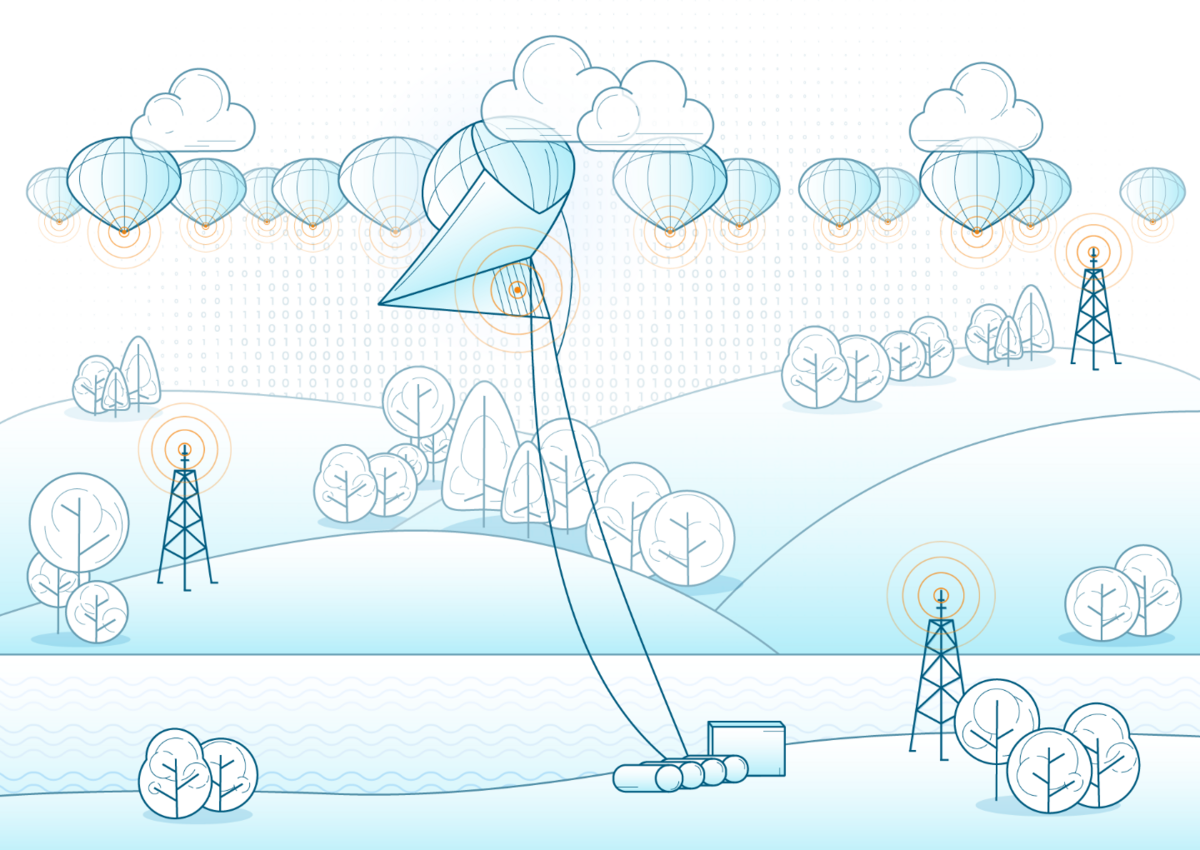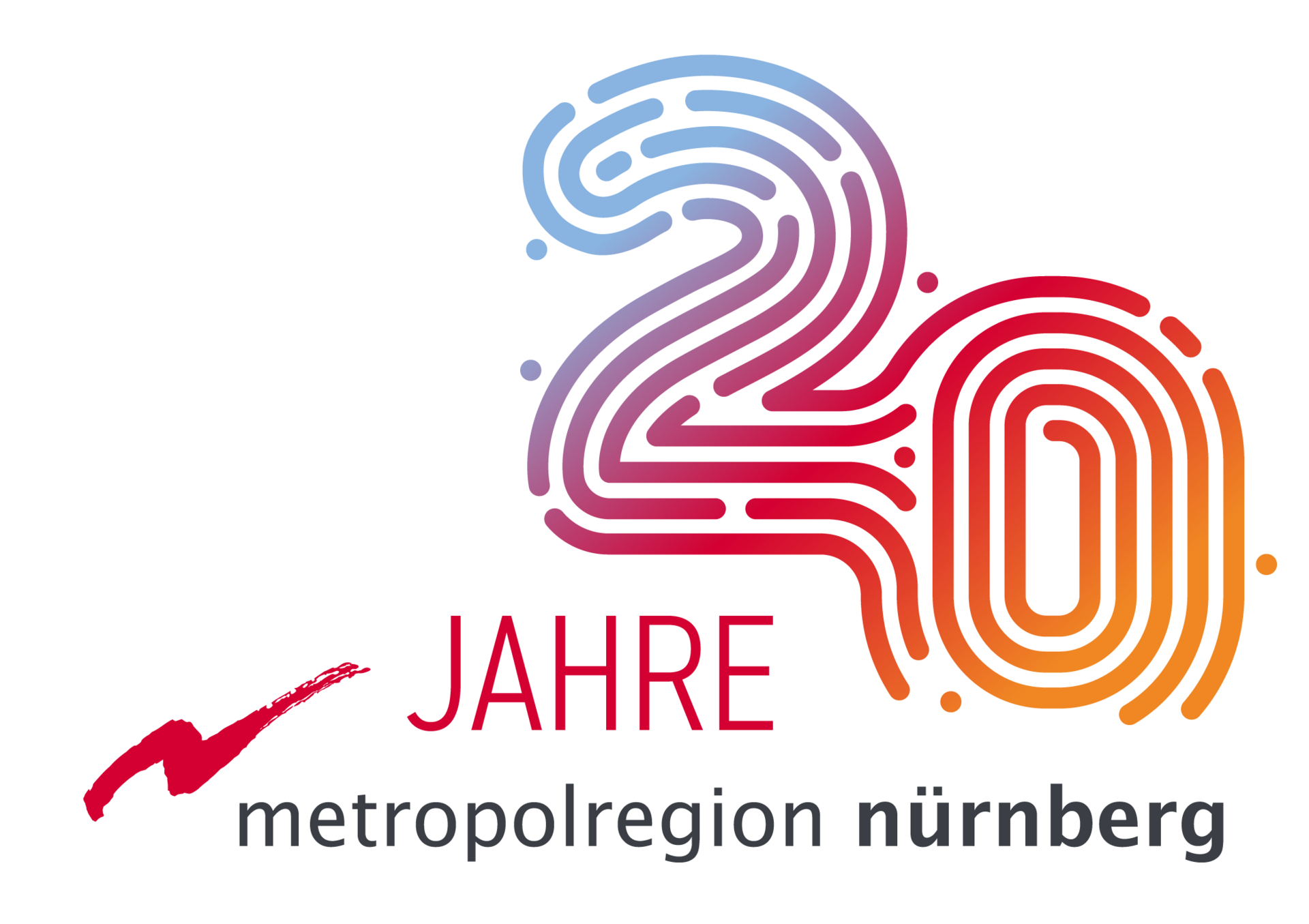Flying “SMARTIES” explore the sky and make predictions more precise
“SMARTIES” - intelligent mini weather balloons - are intended to enable a faster response and warning in the event of extreme weather events or environmental disasters.
In the research project “SMARTIES” (SMART Integrated Electronic Sensors for quantifying atmospheric transport and mixing), the Max Planck Institute for Dynamics and Self-Organization (MPI-DS) and the Fraunhofer Institute for Integrated Circuits IIS are developing and testing a system of intelligent mini-balloons with atmospheric tracers - SMARTIES. The SMARTIES are equipped with the wireless transmission technology mioty® and can collect atmospheric data from up to several thousand sensors via a single flying base station, which then flows into prediction models for the transport of particles. This should enable a faster response and warning of people in the event of extreme weather events or environmental disasters.
Volcanic eruptions, such as in Italy or Iceland, pose a threat to the existence of the people living in the affected regions. In order to contain the consequences of such extreme local events, reliable and rapid warning is essential. Targeted measurement of the local atmosphere also makes it possible to better predict the spread of airborne pollution or pollen, for example.
More accurate predictions even in smaller areas
For atmospheric currents, the large-scale transport of pollutants and pollution for areas larger than 50 km has been well researched and is constantly monitored by measuring stations and satellite observations. However, knowledge about smaller areas in the order of 100 m to 50 km and the associated concentration fluctuations is currently limited. This is precisely where the SMARTIES project comes in.
SMARTIES meet mioty® and enable more precise predictions
SMARTIES are small and very light measuring instruments consisting of environmental sensors and a wireless communication unit. They are distributed in the atmosphere with the help of several small, biodegradable balloons. During the flight, they transmit sensor data to a network of base stations. “Both the data transmission and the localization of the balloons work with the mioty® technology developed by Fraunhofer IIS. This makes them significantly more energy-efficient and more easily scalable than previous solutions,” explains Prof. Alexander Martin, Director of Fraunhofer IIS. This new combination of technologies makes it possible for the first time to collect a large amount of atmospheric data in a small space. This includes temperature, humidity and wind speed, for example.
“We can use this data to develop new models for the flow behavior in local areas,” says Dr. Mohsen Bagheri from the MPI-DS, explaining the content of the project. This enables precise predictions of the distribution of particles. “With SMARTIES, we can then use these new models to better warn people in the event of acutely dangerous events by making more accurate predictions,” adds Prof. Eberhard Bodenschatz, Managing Director of the MPI-DS.
Tests on the Zugspitze and in Finland
The SMARTIES project is part of the Fraunhofer Max Planck cooperation program and is being carried out in collaboration with the MPI-DS under the sub-project management of Dr. Mohsen Bagheri and the Fraunhofer IIS under the sub-project management of Dipl.-Ing. Ferdinand Kemeth. The basis for the project includes atmospheric measurements at the “Schneefernerhaus” environmental research station on the Zugspitze. At the end of the project, the system will be tested in several measurement campaigns, including in Pallastunturi, Finland.

© Fraunhofer IIS | Schematic representation of the mini weather balloons with environmental sensors and the base stations on earth and in the CloudKite

© Max Planck Institute for Dynamics and Self-Organization | A balloon dragon filled with helium



